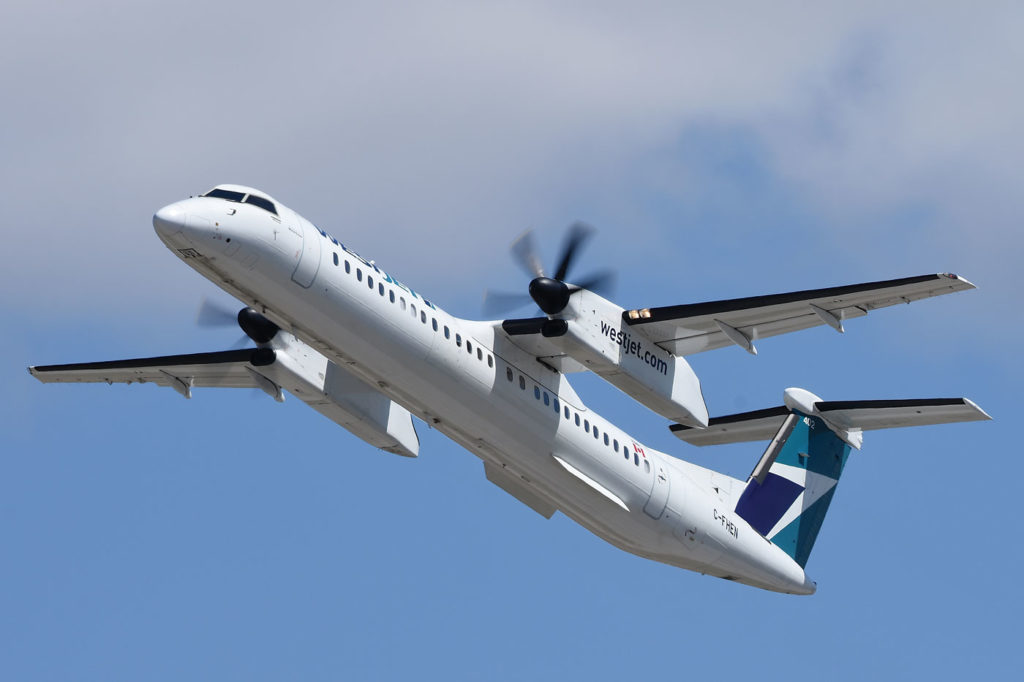Estimated reading time 5 minutes, 46 seconds.
De Havilland Aircraft of Canada Ltd. is considering variations on a theme for its Dash 8-400 aircraft, gauging interest for a shrunken version of the turboprop and pondering a stretched design.

“We’ve been starting initial discussions on possible variants of the aircraft,” said Todd Young, De Havilland’s chief operating officer. “This would be a shorter aircraft in the range of 50 to 60 seats. That would be a possible replacement to the original Dash 8-300, albeit based on a Dash 8-400 configuration.”
During a phone interview, he said De Havilland is well positioned to prosper under the ownership of Victoria-based Longview Aviation Capital Corp., which acquired the Dash 8 program from Montreal-based Bombardier Inc., effective June 1, 2019.
“We’ve also started to look at the possibility of stretching the aircraft and making a 100-seat turboprop, though that is further away. But as part of the original design of the Dash 8-400, which I was part of, we had these two potential variants in mind,” said Young, the former general manager of the Q Series program at Bombardier.
De Havilland will be conducting market demand assessments for a shrunken version, including holding talks with prospective customers about potential changes to the Dash 8-400, formerly known as the Q400 under Bombardier.
“We’re starting to have the right discussions about what could be the future of this product platform,” said Young. He worked at Bombardier when WestJet Airlines Ltd. chose the Q400 over the French-Italian rival ATR 72-600 turboprop in 2012 for the Calgary-based airline’s regional Encore service.
WestJet’s workhorse continues to be Boeing 737s, but the smaller Q400s allow Encore to do short-haul flights to smaller markets considered uneconomical for the narrow-body 737s.
Bombardier produced the Q400 from 1997 until it sold the program to Longview in mid-2019.
Longview chairman David Curtis said his focus is on maintaining growth in Canadian aerospace.
“We are doing that by first ensuring that De Havilland’s existing customers and orders are addressed in a seamless fashion. And we are also seeking market opportunities around the world, leading to new Dash 8-400 sales,” he said in an email. “These aircraft have enormous versatility, and we believe there is a bright future.”
New sales are a priority at De Havilland, added Curtis, who is also president of a Longview division, Viking Air Ltd., which makes the Series 400 Twin Otter.
Young said 82 seats is the “sweet spot” for the existing Dash 8-400. That’s a higher capacity than the 78 seats considered to be the ideal number five years ago.
“We wake up every day and all we think about are Dash 8s,” he said. “That’s not a negative against Bombardier. Bombardier had a lot of things that they were focusing on. Now is a real good opportunity for us to look at our product lines and see where the markets are shifting and how we can adjust our products lines to suit the market demands for the future.”
Young also said De Havilland is marketing the existing fuselage structure to have a new 50-seat configuration with business class, premium and coach (with seat pitches of 38 inches, 36 inches and 32 inches, respectively).
Bombardier previously sold Q400s with as few as 58 seats and as many as 90 seats in the passenger configuration. Using a cargo/passenger combination, the Q400 had 50 seats.
Young doesn’t have plans to revive manufacturing of the 100, 200 and 300 series of smaller Dash 8 planes, but believes the 400 has the potential to keep the Downsview assembly plant in Toronto busy for years to come.
De Havilland’s customer base exceeds 65 owners and operators of the Dash 8-400.
In a slide presentation, Young and his colleague, De Havilland sales vice-president Philippe Poutissou, summed up their marketing pitch for the Dash 8-400: “Turboprop economics with jet-like performance.”
In October, De Havilland announced that it signed a pact with the Tanzania government’s flight agency to acquire a Dash 8-400 in a 78-seat, two-lavatory configuration, marking the first firm deal for the aircraft under Longview’s ownership. The agency will lease the aircraft to the country’s flag carrier, Air Tanzania, whose slogan is “The Wings of Kilimanjaro.”
Air Tanzania chief executive officer Ladislaus Matindi said there are already three of the planes in service at the African carrier, which also ordered one other of the turboprops previously. When the latest firm deal is delivered, Air Tanzania will have five Dash 8-400s in its fleet.
“We are very satisfied with the Dash 8-400 aircraft’s low operating costs and reliable operations in our high-utilization environment,” said Matindi in a statement.








